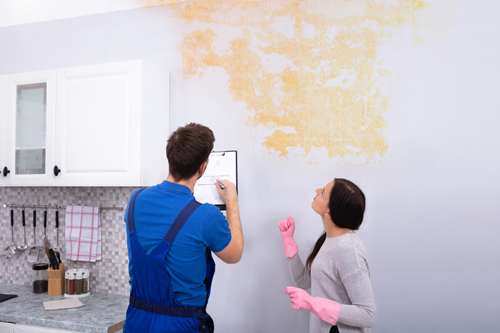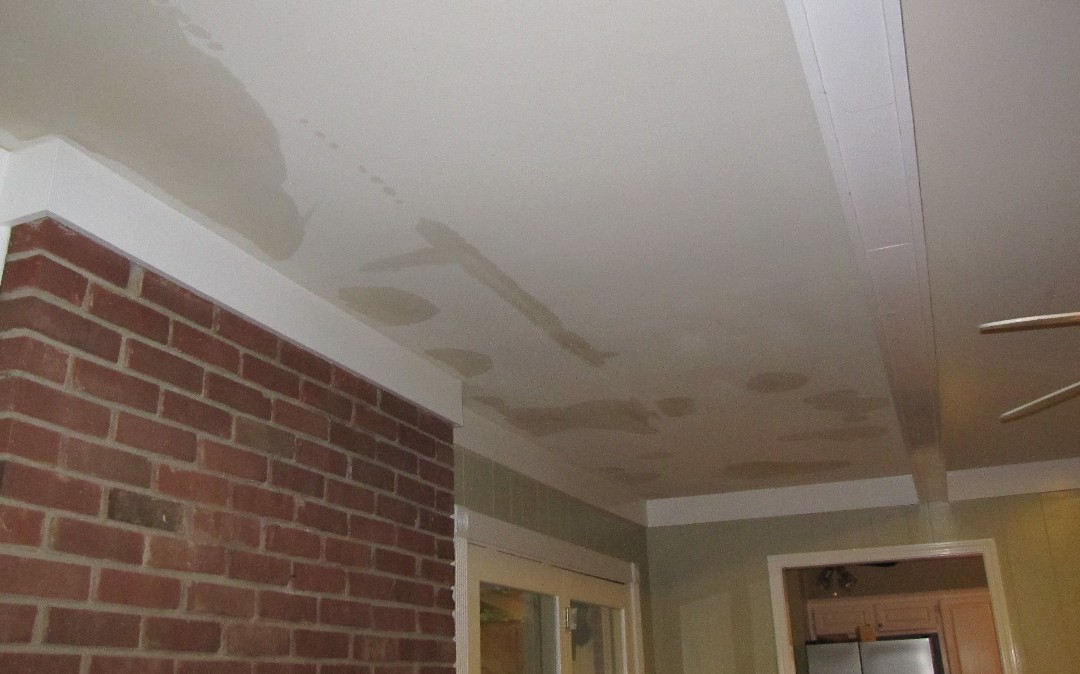Combat Water Stains On Walls - Guidance For Detection And Fixing
Browse Our SiteWhat're your insights and beliefs about How to Find and Repair Water Leaking in the Wall?

Water spots on wall surfaces are not enjoyable to the eyes. Occasionally it seems nearly inevitable to experience water spots on wall surfaces in houses.
House owners living in humid areas frequently deal with the worry of water spots on wall surfaces. With well-rounded as well as exact info on the causes of water spots as well as timely repair service procedures, you will certainly constantly be an action in advance of such incidents.
3 Typical Root Causes Of Water Spots on Wall Surfaces
As opposed to popular belief, water spots on walls do not always stem from poor building materials. There are numerous sources of water discolorations on wall surfaces. These consist of:
Moist
When hot damp air consults with dry cold air, it causes water beads to form on the wall surfaces of structures. This takes place in washrooms and also cooking areas when there is heavy steam from cooking or showers. The water beads can tarnish the bordering walls in these parts of your house as well as spread to various other areas.
Moist or condensation affects the roof and also walls of structures. This creates them to show up darker than various other areas of the home. When the wall is wet, it creates a suitable setting for the development of germs and also fungis. These may have damaging results on wellness, such as allergic reactions as well as breathing disorders.
Poor Drainage
This will certainly avoid water from permeating right into the walls. This web links to excessive moisture that you discover on the wall surfaces of your building.
So, the leading source of wet wall surfaces, in this situation, can be an inadequate drainage system. It can additionally be due to inadequate management of sewage pipelines that run through the structure.
Pipe Leaks
Many residences have a network of water pipes within the walls. This makes certain that the pipes are faraway from the reach of destructive rodents. It constantly increases the feasibility of such pipelines, as there is little oxygen within the walls. This prevents corrosion.
A downside to this is that water leakage influences the wall surfaces of the building as well as causes widespread damage. An indicator of damaged pipelines is the appearance of a water discolor on the wall surface.
Pro Pointer
A houseplant in your house likewise raises its moisture. If the residence is already damp, you might desire to present houseplants with minimal transpiration. An example of suitable houseplants is succulents.
Water Spots on Wall Surface: Repair Work Tips
Property owners would normally desire a quick fix when handling water spots. They would quickly recognize this is detrimental as the water stains recur. So, here are a few useful suggestions that will guide you in the repair of water spots on walls:
Verdict
No one desires to have water spots on walls in their home, it can happen to the ideal of us. This post provides you take advantage of, as you now know just how to manage this incident if it does happen.
It is always best to recruit specialist solutions to assist fix the problems in your house.
In some cases it seems virtually inescapable to experience water stains on wall surfaces in houses.
Contrary to popular idea, water spots on walls do not constantly stem from bad building products. There are a number of causes of water stains on wall surfaces. The water droplets can tarnish the bordering walls in these components of your house and spread to various other locations.
Here are a couple of valuable tips that will certainly direct you in the repair of water discolorations on walls:
What To Do About A Water Stain On The Ceiling
Why This is Important
Not only are water stains a cosmetic issue, but they can also indicate that there is a leak in the home that needs to be fixed. Sometimes, this may be the first indicator of a bigger problem brewing or may have been a one time leaky issue. It is important to investigate to make sure it is under control before you possibly have thousands of dollars in repairs.
Identify the Cause of the Water Stain on the Ceiling and Where to Start
It is important to identify the cause of the water stain on the ceiling first so you can fix it. Start first with the roof to see if there are leaky shingles or missing shingles, missing flashing, or weakened seals around roof vents. You may need to get on top of the roof to look or call a professional to check for you. It is possible that water is coming into the home from the roof. So you will want to have the professional take a look to see if this is the issue.
Also, look in the attic to see if there is a pool of water and that will also help you to know if there is water leaking into the home.
Radiator or Air Handler on 2nd floor
In colder parts of the country, there may be a radiator on the second floor. Radiators are used to keep rooms warm in the cold months and do wear out or need replacing. Does the radiator have a pool of water underneath it or any dripping? If yes, this could be the problem and causing the water stain on the ceiling. Check the model of the radiator and see if it is something you can do yourself or call a professional to check the body, pipe, and the valve for leaks.
The same is true for those who have an air handler on the second floor. Did your AC stop working? Or do you see water leaking? The drip pan (if you have one) on an HVAC unit collects the water and it can become clogged and back up. The float switch (again, if you have one) will activate as soon as the water reaches a certain level and shut down the HVAC unit, thus not allowing the water to continue to flow. Make sure the HVAC doesn’t become clogged and checking this monthly is a good idea.
Upstairs Bathroom Can Cause a Water Stain on the Ceiling
Bathrooms are often the culprit as caulking wears out after about 10 years and needs replacing. Is the home older than 10 years? This may be the issue. While checking the caulking in the bathroom around the sinks, toilets, and shower/bath, also check for black mold in the shower. Might as well rule everything out while you are looking for the source.
Other areas to look at are toilets clogging and overflowing. Do you see water near the toilet on the floor? This could be the seal is broken on the toilet and it needs replacing. Also, adding caulk to the toilet to connect it to the floor is a good idea. If the toilet is continuously running, you can shut off the water and do the water meter test.
Write down the number on the water meter and then turn off the water for three hours. When you turn it back on, check the number on the water meter. If it has increased, then you have a leak in the indoor plumbing.
Taking care of these areas is essential as sewer gases can also be escaping. Sometimes these issues will soak the ceiling below and clog in sinks and drains in the shower can also cause flooding in a bathroom.
Put a Drop Cloth on the Floor
With goggles on and gloves, put a drop cloth on the floor. Then, take 3 glasses of warm water and one cup of bleach and mix it together. Set up a ladder and climb up to the stain. Use a sponge that is soaked in the concoction to rub it on the water stain to get it to come off. Take a spray bottle of plain water and spray the stain to get the bleach mixture off. This is important because you want to be able to prime it and paint it. Take a dry towel and rub the stain to help it dry faster. Next, put painters tape around the ceiling if the spot is near the walls. Apply an Oil Based, Stain Blocking Primer
Apply an oil based, stain blocking primer that is mold resistant that matches the ceiling. It is important to put the primer on first so the paint doesn’t soak into the ceiling. If you have a flat ceiling, you can use a paint roller with an extension to apply it. Once the primer has dried, apply the paint. If you have a textured ceiling, a spray on primer might work better.
Choose a Latex or Alkyd Ceiling Paint
The latex ceiling paint is water-based and dries faster than the oil-based paints and also is thicker than wall paint. Make sure that the paint matches the ceiling color. Using a roller, paint it on over the primer and let it dry for up to four hours. Then, apply a second coat and let it dry. The second coat should make the stain disappear.
https://insideandoutpropertyinspectors.com/water-stain-on-ceiling/

I hope you enjoyed our section about . Thanks a ton for taking a few minutes to read through our piece. Enjoyed our posting? Please share it. Help someone else find it. We enjoy reading our article about How to Remove Water Stains from Walls and Ceilings.
Visit